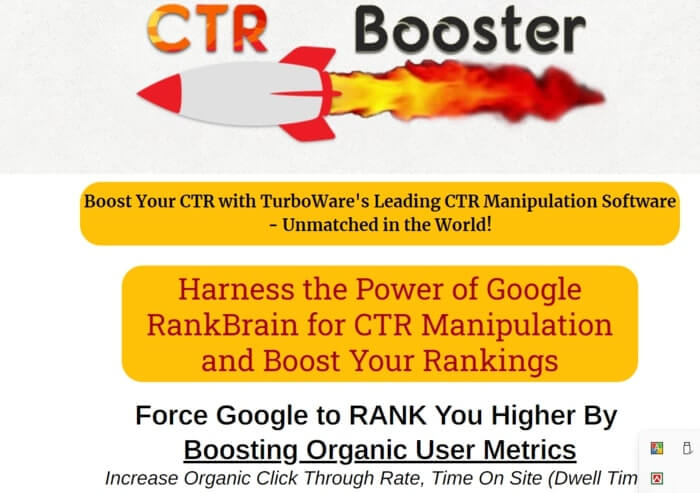Maximize Your Local Listings with Expert GMB CTR Manipulation Strategies
Maximize Your Local Listings with Expert GMB CTR Manipulation Strategies
Blog Article
How to Measure the Effect of CTR Control on Your Advertising
Understanding the nuances of click-through rate (CTR) adjustment in marketing is necessary for companies making every effort for authentic individual engagement. By checking out vital metrics such as conversion rates and bounce prices, marketers can uncover prospective discrepancies that may emerge from synthetic enhancements.
Comprehending CTR Control
Recognizing CTR adjustment is necessary for marketing professionals looking for to maximize their campaigns and make certain data honesty. Click-through rate (CTR) refers to the proportion of individuals who click on a certain web link to the overall number of individuals that see the advertisement or content.
The effects of CTR manipulation extend beyond plain information distortion; they can undermine count on digital marketing. When companies rely upon inflated metrics, they might purchase inefficient projects, inevitably hurting their roi. Furthermore, platforms may punish marketers participating in such techniques, bring about additional implications for their advertising efforts.
To effectively deal with CTR adjustment, marketing professionals should establish a thorough understanding of their information resources and analytics devices. By utilizing sophisticated monitoring approaches and inspecting web traffic resources, they can guarantee and determine irregular patterns that their efficiency metrics mirror genuine individual engagement - GMB CTR Manipulation. This watchfulness is vital for promoting long-term success in an increasingly competitive digital landscape
Trick Metrics to Analyze
Effective evaluation of vital metrics is critical for evaluating real performance of advertising projects and discovering possible CTR adjustment. One key metric to think about is the Click-Through Rate (CTR) itself, which represents the proportion of customers who click on an ad to the overall number of individuals who view it. A sudden spike in CTR may indicate control, demanding further investigation.
Additionally, keeping an eye on conversion prices is crucial. A high CTR with a low conversion price might signify that the clicks are not real or that the targeting is misaligned (CTR Manipulation). Examining bounce rates can offer insight into customer interaction; a high bounce price after a click might recommend that the traffic is not quality-driven.

Devices for Dimension

Additionally, A/B testing tools such as Optimizely or VWO can facilitate experimentation with different ad versions to determine which aspects drive higher CTR. These tools enable marketers to analyze real-time efficiency and resource make data-driven modifications. Social network analytics devices, like Hootsuite or Sprout Social, can also be get more crucial in recognizing CTR within social systems, giving insights right into audience actions and engagement fads.
Furthermore, warm mapping tools, such as Hotjar, can expose how users connect with ads, aiding to identify where renovations can be made. Combining these tools produces a durable measurement structure, allowing marketing professionals to determine the results of CTR adjustment properly. Inevitably, the appropriate selection of measurement tools is important for making informed marketing choices and enhancing project efficiency.

Examining Long-lasting Results
One should consider the long-term impacts of CTR manipulation on total advertising and marketing performance, as temporary gains can frequently mask much deeper implications. In time, synthetically inflated click-through rates might lead to lessened trust from consumers and online search engine alike. When users consistently experience deceptive practices, they might end up being reluctant to involve with the brand name, causing reduced conversion rates in the future.
Additionally, algorithm updates from systems such as Google are made to focus on real interaction over inflated metrics. As a result, organizations that count on CTR control may find themselves punished, leading to a decrease in organic reach and visibility. This can have a cascading result on brand name integrity and client loyalty, ultimately threatening the really objectives that the preliminary control looked for to accomplish.
Moreover, the data accumulated from manipulated CTR might misinform online marketers in their strategy growth. Relying upon skewed data can cause misdirected projects that stop working to resonate with the target market, leading to lost sources and missed opportunities. Therefore, it is vital for marketers to assess the lasting ramifications of CTR control and prioritize sustainable, ethical interaction approaches for lasting success.
Ethical Considerations in CTR Adjustment
In the world of electronic advertising and marketing, honest considerations bordering CTR manipulation are vital. While the need to boost click-through prices (CTR) can cause short-term gains, the potential long-term effects on brand name honesty and customer depend on can not be overlooked. Adjusting CTR commonly includes methods that may misguide customers, such as clickbait headlines or deceitful marketing practices. These approaches can lead to a short-term increase in traffic however may eventually erode customer self-confidence.
Moreover, moral problems reach conformity with policies such as the Federal Trade Compensation (FTC) guidelines, which mandate transparency in marketing. Falling short to stick to these requirements can expose services to legal implications and damage their online reputation. Marketing professionals check that have to consider the effects of their approaches on individual experience and the more comprehensive industry landscape.
Additionally, the rise of artificial intelligence and automation in advertising provides additional moral dilemmas. Eventually, moral marketing techniques must prioritize openness, honesty, and regard for the consumer, fostering long-term connections that transcend plain metrics like CTR.
Verdict
In final thought, gauging the impact of CTR manipulation on marketing requires an extensive evaluation of essential metrics, including click-through prices, conversion rates, and bounce rates. Eventually, a data-driven strategy makes sure that advertising and marketing methods are reliable and lined up with real individual interactions.
Comprehending the nuances of click-through rate (CTR) adjustment in advertising is necessary for businesses aiming for authentic customer engagement.Reliable analysis of essential metrics is important for examining the real performance of marketing campaigns and spotting prospective CTR manipulation.One have to think about the long-lasting effects of CTR manipulation on general advertising and marketing efficiency, as short-term gains can typically mask deeper ramifications.In the world of digital advertising and marketing, honest factors to consider surrounding CTR control are vital.In final thought, measuring the impact of CTR control on advertising and marketing needs a comprehensive analysis of essential metrics, including click-through rates, conversion prices, and bounce rates.
Report this page